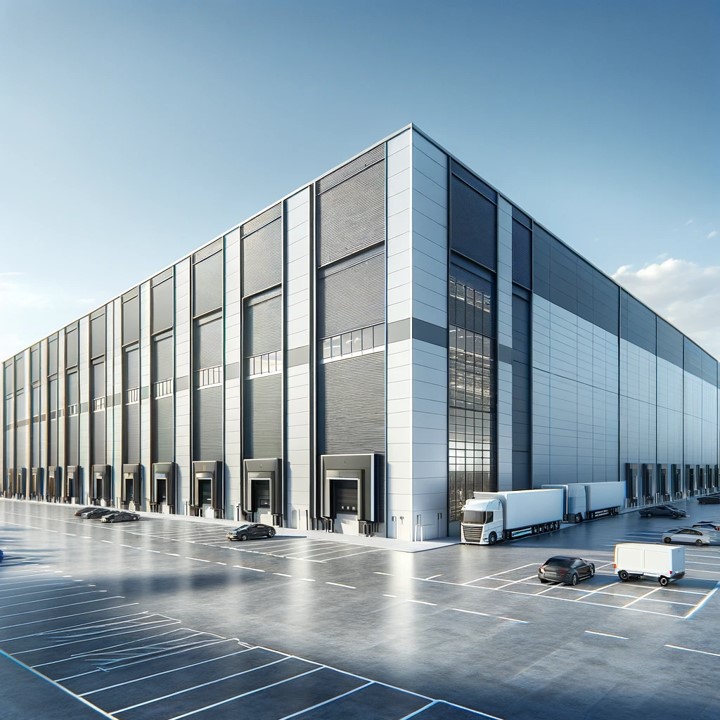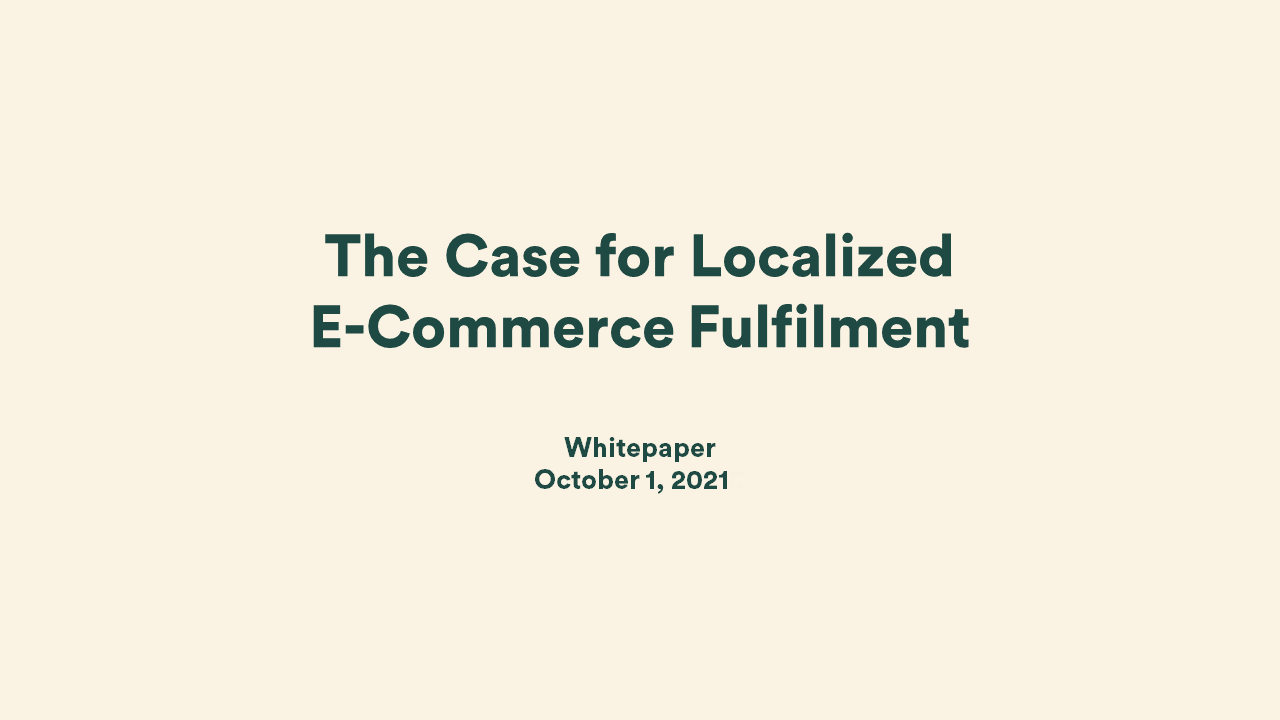A Guide to Ecommerce Fulfillment
Everything You Need to Know to Grow Your Ecom Business
Published on Oct 30, 2022
A Guide to Ecommerce Fulfillment: Everything You Need to Know to Grow Your Ecom Business
By Rayan Osseiran || 1 December 2021 || 11 Min Read
Your products are fantastic!
Your website is epic, too!
And, your sales funnel slides your customers easily into checkout!
But, if your eCommerce fulfillment doesn’t run smoothly, your web-based business is destined to fail. Every step in your fulfillment process is an opportunity to optimize — from order placed to order received. Slight delays or minor errors can result in a terrible customer experience.
A successful eCommerce fulfillment process involves many aspects, and all of these should work seamlessly. The better you manage all these moving pieces, the greater your eCommerce success.
What is an eCommerce Fulfillment?
Ecommerce fulfillment is the process of receiving and storing inventory and — once the order is received — then picking, packing, and shipping orders to the end customers. The fulfillment process is an integral part of your business, whether you are just starting your business from your garage or have your customer footprint across continents.
Often, fulfillment service can be misinterpreted as the eCommerce operation that delivers your products to customers. However, Ecommerce fulfillment is much more than just shipping.
Fulfillment refers to the end-end process including inventory receiving, storage or warehousing, packing and shipping orders, and processing any exchanges or returns.
Ecommerce fulfillment starts when a customer checks out from your website (in case of B2C) or when a business issues a purchase order to your business (in case of B2B).
Delivering products in the eCommerce industry is one of the most vital aspects of customer experience. Fast, reliable, and transparent fulfillment earns trust with your customers and keeps them loyal. Hence, an impeccable order fulfillment process is a strategic imperative to start and grow your eCommerce businesses.
|
Did you know? Shorages provides on-demand Ecommerce storage & fulfilment services for companies looking to start and scale their operations in the GCC! Shorages takes care of automating and scaling your brand. We:
|
Types of Ecommerce Fulfillment?
As you try to scale your business, most eCommerce owners reach a crossroads: Whether to use in-house operations or outsource it. Here are three potential solutions for fulfilling an order, including in-house fulfillment, Fulfillment by Amazon (FBA), and other services.
In-house order fulfillment
This is most common for small brands where the storage, processing, and shipment of orders happen from your storage location. This is also known as the self-fulfillment process and doesn’t need a third-party logistics (3PL) provider.
However, as your business grows and you process a larger quantity of orders or start processing a wider variety of products, the in-house fulfillment can quickly become inefficient. Also, managing inventory and packaging orders can be overwhelming for merchants, as it takes a lot of your valuable time.
Ideal for:
Merchants looking for 100% control of inventory and the pick, pack, and ship process.
Start-ups or eCommerce players with low scale operations
Businesses that sell products with complicated packaging requirements or sell only in a particular season.
Not a great option:
As the process is time-consuming, you can spend this time increasing your revenue as a business owner.
It becomes costly as the business grows, and you need extra space, workforce, and equipment for order fulfillment.
- Third-Party Fulfillment
Third-party fulfillment is the process of outsourcing your eCommerce fulfillment to a specialized service provider — also known as 3PL. It is typically a preferred choice when your business grows, you get less time to manage your fulfillment, and you struggle to get space and people to manage the order processing operations.
As operating in a specific niche viz, order fulfillment makes many businesses economically viable and strategically critical. Also, due to the volumes they handle, you take advantage of negotiated bulk discounts.
When you outsource your eCommerce fulfillment process to a 3PL service provider, you leverage their expertise in end-to-end order fulfillment — receiving, storage, picking, packing, labeling, and return processing.
Ideal for:
Merchants who can store the inventory in bulk
Ecommerce players are trying to scale to new geographies but do not want to invest in a local warehouse space or operation.
Businesses whose shipping rates are substantial and looking for ways to cut down costs and improve efficiency.
Not a great option:
You are too small and won’t be able to leverage 3PL’s economies of scale.
You do not require warehousing but simply pick-up and delivery (in this case look for last-mile courier companies).
Dropshipping
In this model, you as a merchant never hold the inventory. Most of your supply chain process — from product sourcing or production through fulfillment — is handled by the manufacturer. It reduces the overhead as you are only responsible for marketing and sales.
The customer places the order on your website. The order is forwarded to the manufacturer’s CRM (manually or via automated integration), and the manufacturer ships the product directly to the customer.
Ideal for:
Entrepreneurs who want to quickly start their business without much planning or investment.
Businesses who are not sure about the product quality. In dropshipping, you can easily switch your manufacturer, while your marketing process will more or less remain the same.
You can sell your products anywhere without having any presence in terms of warehouse or shipping partners — as long as your manufacturer dropships to that geography.
Not a great option:
If you want to build your own brand. Dropshipping is suitable for white-labeled products with no visibility of your own brand.
You don’t have any control over the quality of the shipment process. Fault, late, damaged products are pretty standard in this model, and you can expect a healthy return rate with an inexperienced dropshipper.
Risk of losing your customers if your manufacturer runs out of their inventory or struggling to keep up their production lines. You, as a marketer, have no control over manufacturers’ operations.
Multi-channel Ecommerce fulfillment
Your customers may order products from your website, from Amazon, eBay, or elsewhere. But that doesn’t necessarily mean you need a dedicated fulfillment option for every channel.
A multi-channel fulfillment is a process of managing and fulfilling orders across all the channels, irrespective of the source of your product purchase. Having a multi-channel fulfillment solution enables you to diversify your eCommerce marketing and sales channels while keeping your order fulfillment process manageable.
|
Service Shorage supports multi-channel Ecommerce fulfillment! This means you can sell products on your own website, then process and send orders through Shorage fulfillment centers. The service include:
|
Understanding the Ecommerce Fulfillment Process?
You must have ordered something online in the past. But, have you ever thought, how an online order ends up at your doorstep? Well, there are many moving pieces to an eCommerce fulfillment process — from routing and managing inventory to choosing the proper packaging for the lowest practical dimensional weight.
Be it in-house or outsourced, for a start-up or a big established brand, delivering local or worldwide, the eCommerce fulfillment process is the same and comprises typical steps. Despite this, few ace this part of operations while others struggle to keep up.
To avoid common problems or to optimize your fulfillment process further, let’s take a close look at each stage.
Receiving Inventory
Before you start fulfilling your orders, you need to have your products in your inventory — in your warehouse. So, step one is getting your products from the manufacturer to your distribution location. The place could be your place of business, a warehouse, a fulfillment center, a storage location, or even your garage.
So, if you are fulfilling orders in-house, your inventory must be on-hand. And, if you are working with a fulfillment service provider, inventory must be sent to the provider well in advance. Remember, pallets or shipping boxes sitting on a loading dock doesn’t mean your products are in the inventory. And, no inventory means no sales!
Here are a few of the common challenges faced during receiving inventory:
If you’re working with an outsourced fulfillment service provider, be sure to pack your products with the right shipping material and clear labeling.
Also, make sure that your SKUs are segregated or else this will delay the receiving process and lead to potential additional charges.
Ensure each unit is packaged properly to avoid damage to the product. Also, multiple boxes must not be taped or banded together.
Doing so will speed the process of receiving inventory and ensure your product is ready to ship out to customers.
Inventory Storage
Inventory storage is the location where your orders are stored. It can be a full-fledged warehouse or a small storage location in your own city. If you are just starting out, your home garage or spare room can serve the purpose.
It’s essential to have enough inventory to meet fluctuating demands, especially during seasonal holidays or peak sales events such as Black Friday, Diwali, Christmas or Ramadan.
Each product should have a stock-keeping unit (SKU) identification code to assign to a dedicated storage place to help you manage your inventory. This can be a shelf, a bin, or even a pallet. The better the storage, the higher visibility you’ll have for your inventory, and as a result, you’ll be able to manage your fulfillment operations better.
|
Tip Qualities you must look out for a top-notch order fulfillment provider:
|
- Order Processing
Order processing is all about picking, packaging, and preparing to ship your orders. And, all of these kick in the moment your customer completes the transaction on your website or on a marketplace.
Packaging plays a vital role in the order processing step. Packaging can be any from these types:
Boxes
- Paper or bubble mailers
The packing material such as bubble wrap or air fillers
This step attracts the maximum errors, and hence accuracy plays a critical role here. Make sure you follow your 3PL provider’s requirements for packing and preparation to minimize costs and avoid damaging items in transit.
|
Tip Ecommerce fulfillment providers can help you deliver delightful customer experience:
Speak to a specialist to find out how Shorage offers you a better solution >> |
Shipping
Shipping your products through a primary carrier is the next step of the fulfillment process. If you are just starting, shipping can involve using a local postal service or a small courier agency. However, for a large-scale eCommerce business, you may want to have a carrier pick up orders from your fulfillment location, whether your storage facility or the warehouse of your fulfillment service provider. For shipping to different countries, fulfillment centers will also often contract multiple courier companies depending on the nature and destination of the package.
|
Tip Profitable Shipping Options:
90% of consumers view free shipping as the top incentive that would encourage them to shop online more often. |
Returns Processing
Ecommerce returns are inevitable, whether it is due to a change of mind or an error in processing the order. Offering a seamless return in terms of policy and logistics is imperative to keep your customers coming back. Also, efficient return processing restocks the product in your inventory and refunds the customer money.
Here are three ways your eCommerce fulfillment partner can ease your return processing:
Your fulfillment service provider must be able to restock your returns within a few days.
Your 3PL provider must handle customer service for returns and let you focus on increasing your sales.
Create a defined process for handling returns. Create a microsite to handle requests or offer discounts as compensation for the inconvenience.
Shipment is a carbon-hungry process and hence doesn’t go well with eco-friendly customers. You can even state the environmental impact on the extra leg of shipment (returns) and let the product be dumped into a recycling bin if the products are not too costly. It is even better to partner with a local refurbishing partner to collect damaged returns and replenish and resell them without any additional cost. Win-Win for both!
|
Join the elite list! Want more insights like this? Subscribe to our newsletter to get the latest thought leadership content delivered right to your inbox — from blogs and resource articles, to podcast episodes, webinars and more.
|
How do you find the right fulfillment service?
A fulfillment service provider may allow you to scale your business with minimal risk and maximum flexibility. Compared to managing a bigger warehouse, using a 3PL provider enables you to scale up or down according to business demand. This flexibility may help lower your storage and overhead costs while allowing you to meet seasonal demands for fast, affordable shipping.
The right eCommerce fulfillment service provider may give your business a competitive edge by lowering costs, increasing revenue, delivering unmatched customer experience, and ultimately helping you build a thriving business. Here are some factors to consider when looking for third-party fulfillment service.
Location
Your inventory should be centrally located from your customer base. Ideally, if you are looking for global coverage, then you need to explore having a fulfillment provider in each region you want to sell in (e.g. Europe, US, GCC,etc.) in order to reduce your cross-border shipping costs.
Specialization
Not one-size-fits-all. Choose a fulfillment center with experience delivering similar merchandise as yours — safely and economically. If your merchandise presents any shipping challenges, you need a 3PL provider with expertise in those challenges. This is particularly important if your products are large, heavy, or fragile.
Turnaround Time
You, too, can offer free two-day delivery similar to what Amazon prime offers. All you need is a great fulfillment warehouse that can turn your orders around quickly. Top eCommerce fulfillment centers that offer same-day shipping helps you get to your customers faster and grow your business.
Customer Support
Look for 3PL services that give you a personalized dashboard so that you can track your order fulfillment and inventory in real-time. Ask for customer support timings that best suit your serviced location. When it comes to customer service, transparency is the key. If your customers can track their packages and process their returns seamlessly, you’ll have fewer customer service calls.
Predictable and accurate fulfillment equals happy customers and positive reviews. Robust eCommerce fulfillment processes can save you time and money. In addition, well-run fulfillment will help you expand your business. Reach out to us and schedule a call with one of our specialists on www.shorages.com to find out more about how Shorages can help you launch and scale your brand in the GCC.
More Blogs

09 Nov 2023
How to Sell on Amazon KSA and UAE Without a License
Find out how you can launch your products on Amazon marketplaces in UAE and KSA

17 May 2024
Top 5 Warehouse Companies in the UAE
The list of top 5 warehouse companies for storage in Dubai

